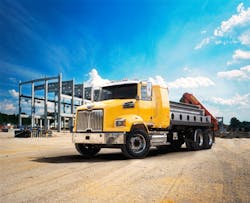Class 8 Truck Buyers Remain Cautious: Report
Buyers of Class 8 heavy trucks are replacing rather than growing their fleets, according to analysis by FTR.
Preliminary sales data for December 2019 indicate stability, the company says, with about 20,000 units sold, matching the average for the quarter. The company suggests that buyers are “only ordering what they know they need for the next few months.”
FTR expects similar order rates for heavy trucks, including those used in construction, over the next few months.
December orders were up 14 percent over November, but the total was still below the less-than-robust results seen during October, FTR says. For the year, Class 8 truck sales are down 7 percent to 179,000 units.
“This is as balanced and stable as you are going to see in Class 8 ordering,” said Don Ake, VP commercial vehicles, in a prepared statement. “Fleets are ordering trucks according to their standard replacement cycles and also for normal delivery cycles. They are not speculating about the future direction of the freight market because there is too much uncertainty. This is a ‘wait and see’ approach.
“The freight market is strong, but growth has stalled,” he said. “The good fleets are making money, the weak fleets are leaving the industry. It is a rebalancing environment. Fleets have the funds to replace old units and with a growing economy, they have the confidence to do so. However, the equipment market is in a holding pattern due to economic and political factors. The political uncertainty will only intensify up to the election.”
Source: FTR





